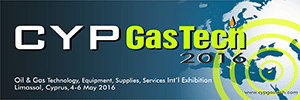
Global investments in renewable energy rebounded strongly last year, registering a solid 17% increase to $270 Billion in 2014 after two years of declines and brushing aside the challenge from sharply lower crude oil prices.
A continuing sharp decline in technology costs – particularly in solar but also in wind – means that every dollar invested in renewable energy bought significantly more generating capacity in 2014. The 103GW of capacity added by new renewable energy sources last year compares to 86GW in 2013, 89GW in 2012 and 81GW in 2011 and made 2014 the best year ever for newly installed capacity. Wind, solar, biomass and waste-to-power, geothermal, small hydro and marine power contributed to an estimated 9.1% of world electricity generation in 2014, up from 8.5% in 2013.
This meant that last year the world electricity system emitted 1.3 Gigatonnes of CO2 – roughly twice the emissions of the world’s airline industry – less than it would have if that 9.1% had been produced by the same fossil-dominated mix generating the other 90.9% of world power.
Energy Saving and Energy Efficiency investments include:
Public and private buildings incorporating renewable energy and/or energy efficiency solutions including those based on the usage of Information and Communication Technologies,
Investments in high energy efficient combined heat and power (CHP), including micro-co-generation, and district heating/cooling networks, in particular from renewable energy sources,
Local infrastructure, including efficient lighting of outdoor public infrastructure such as street and traffic lighting, electricity storage solutions, smart metering, and smart grids,
Energy efficiency and renewable energy technologies with innovation and economic potential using the best available procedures.
Investments in Renewable Energy sources include:
Distributed generation from local renewable energy sources, to medium and low voltage (110kV and lower) distribution networks,
Smart-grids enabling higher renewable energy sources uptake,
Energy storage to allow storing part of the energy produced from intermittent sources during low-consumption hours and feeding this energy back at times of peak-demand,
Decentralized energy sources can also be the injecting of locally produced bio-gas into the network,
Micro-generation from renewable energy sources meaning distributed energy from renewable energy, typically providing below 50kW output that is concerned with heat and/or power production technology aimed at the individual domestic households, houses of multiple occupancy, multiple dwellings, and light commercial sectors.
Investments in Energy Infrastructure projects include:
Energy Port infrastructure development,
LNG Bunkering,
Liquid Storage,
LPG Storage,
Energy Building Material,
Electricity Storage on MW scale.
PV Solar farms
Shore – offshore natural gas Special Purpose vehicles.
If you are interested in independently evaluating any of this opportunities please contact me at [email protected]. Please note this is not a solicitation to buy or sell securities or any financial product or service.




























